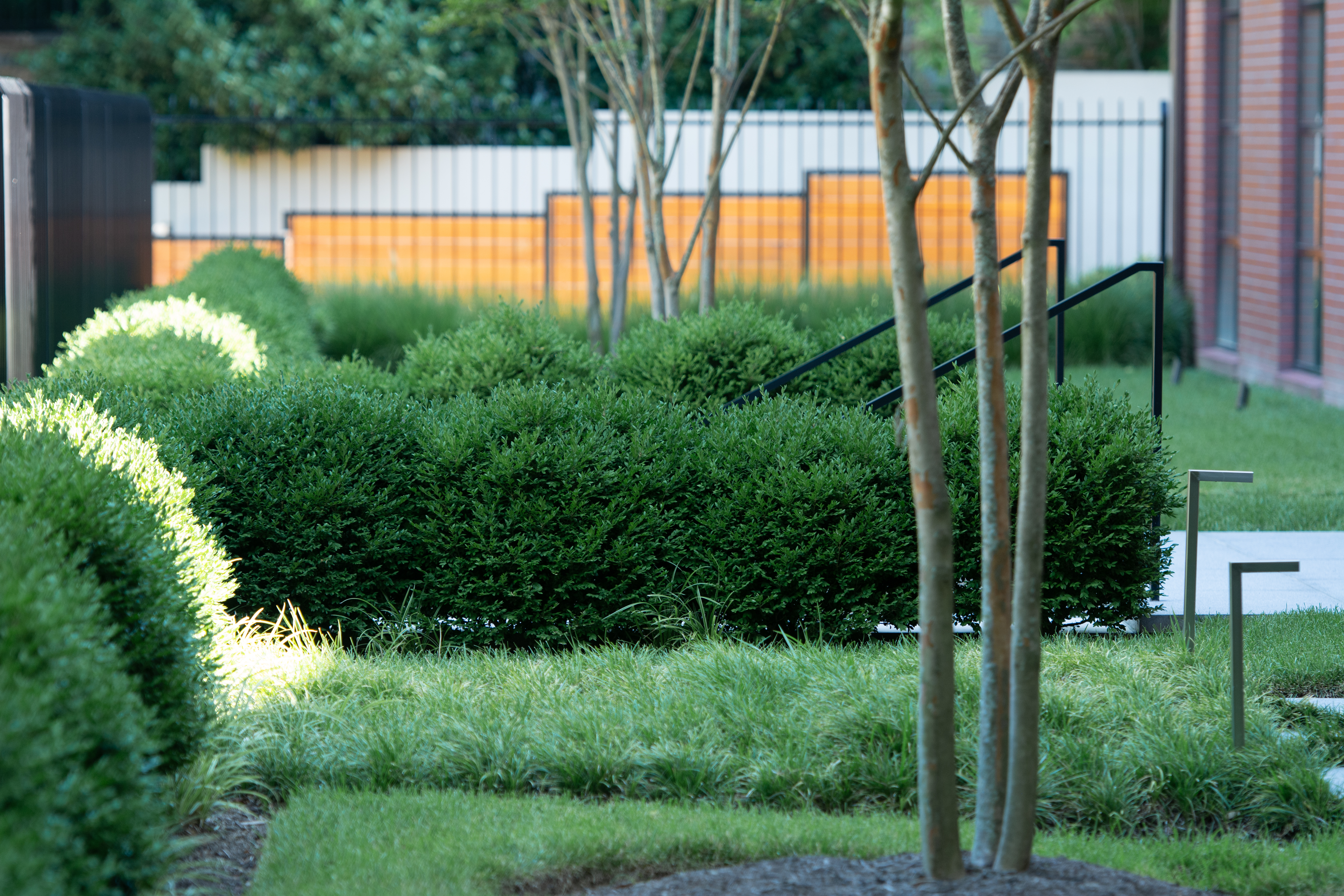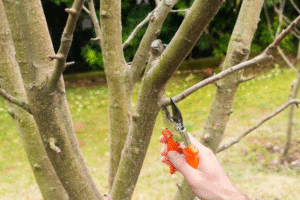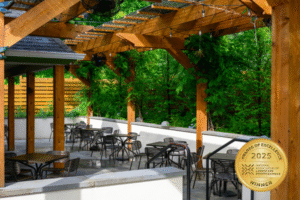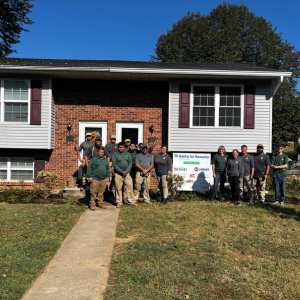Boxwood are a favorite evergreen shrub in home gardens, loved for their versatility, lush year-round color, and general hardiness. Unfortunately, in the past decade, Boxwood blight has threatened the health of many of these plants.
Boxwood blight is a fungal disease that can affect all aboveground parts of the plant. Boxwood blight originated in the United Kingdom in the 1990s and was first confirmed in the United States in October 2011. Since then, it has spread throughout the majority of the continental United States, with rapid and widespread distribution. In just 9 years, Boxwood blight has become a major concern in the landscaping and nursery industries, and for home gardeners.
What You Need to Know
If you have Boxwood on your property, you should know about Boxwood blight and the risk that it poses to the health of your plants. Boxwood blight can infect all Boxwood, though some varieties are more susceptible than others. Boxwood blight causes visual indications of infection, but at early stages, Boxwood can be infected and be “asymptomatic,” and look like nothing is wrong.
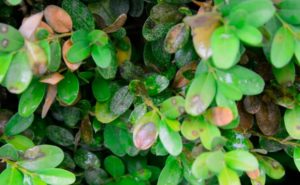
If you notice dark spots or brown blotches on the leaves of your Boxwood, this may be an early indication that your plant has been infected with Boxwood blight. Another symptom is the presence of sporation (white fuzzy growth) on the underside of the leaves. Progression of the blight leads to rapid defoliation of the plant, which begins low and progresses upward through the plant. Extensive loss of leaves can cause the plant to become weak and die. The key differentiator to identify whether your plant has Boxwood blight or another Boxwood disease (which may be treatable) is the presence of narrow black streaks, called “cankers,” on the green stems.
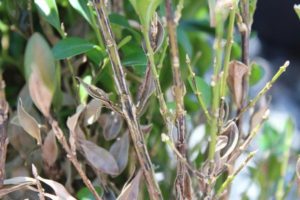
Unfortunately, once a Boxwood is infected with Boxwood blight, treatment options are unlikely to save the plant. It will need to be removed and properly disposed of to prevent spread of the disease to other Boxwood. It is important to know that Boxwood can be asymptomatic and still spread the disease.
Additionally, the fungus can overwinter on Boxwood and leaf litter that has dropped from Boxwood. The blight can be spread through contact with tools, gloves, hands, and rain splatter. Therefore, if a Boxwood becomes infected, swift action of plant removal and cleanup of all surrounding leaves can prevent further spread throughout your garden. If the plant is kept in the garden while infected, it is likely that the infection will spread to other, healthy Boxwood.
Like all fungal diseases, humidity accelerates the growth and spread of Boxwood blight. This is one reason that Planted Earth performs necessary Boxwood pruning during the winter season, to promote air circulation throughout the plant and prevent excess humidity entrapment.
Boxwood blight is not only a threat to the home gardener’s landscape, but poses a major threat to nursery growers and plant distributors, as entire crops can be lost to the blight if the operators are less than vigilant in protecting their Boxwood.
Planted Earth: Doing our Part
All of the gardeners at Planted Earth are educated on the growth, distribution, severity, and visual indicators of Boxwood blight. We do our part to prevent the spread of this plant disease and others by disinfecting all of our pruning tools after each use. We monitor the health of our clients’ Boxwood by performing routine visual inspections during all maintenance and prior to any installation activities. We require bi-weekly fungicide treatments on all Boxwood on our clients’ properties to protect the plants. By understanding the severity of Boxwood blight and by working with a company who is educated and committed to preventing the spread of this disease, you can help promote the health of Boxwood plants in your own garden and beyond its borders. For more information, contact Planted Earth today.
Reference:
Ruhl, Gail, et al. Boxwood Blight. Plant and Pest Diagnostic Laboratory. Purdue University Extension. https://www.extension.purdue.edu/extmedia/BP/BP-203-W.pdf

